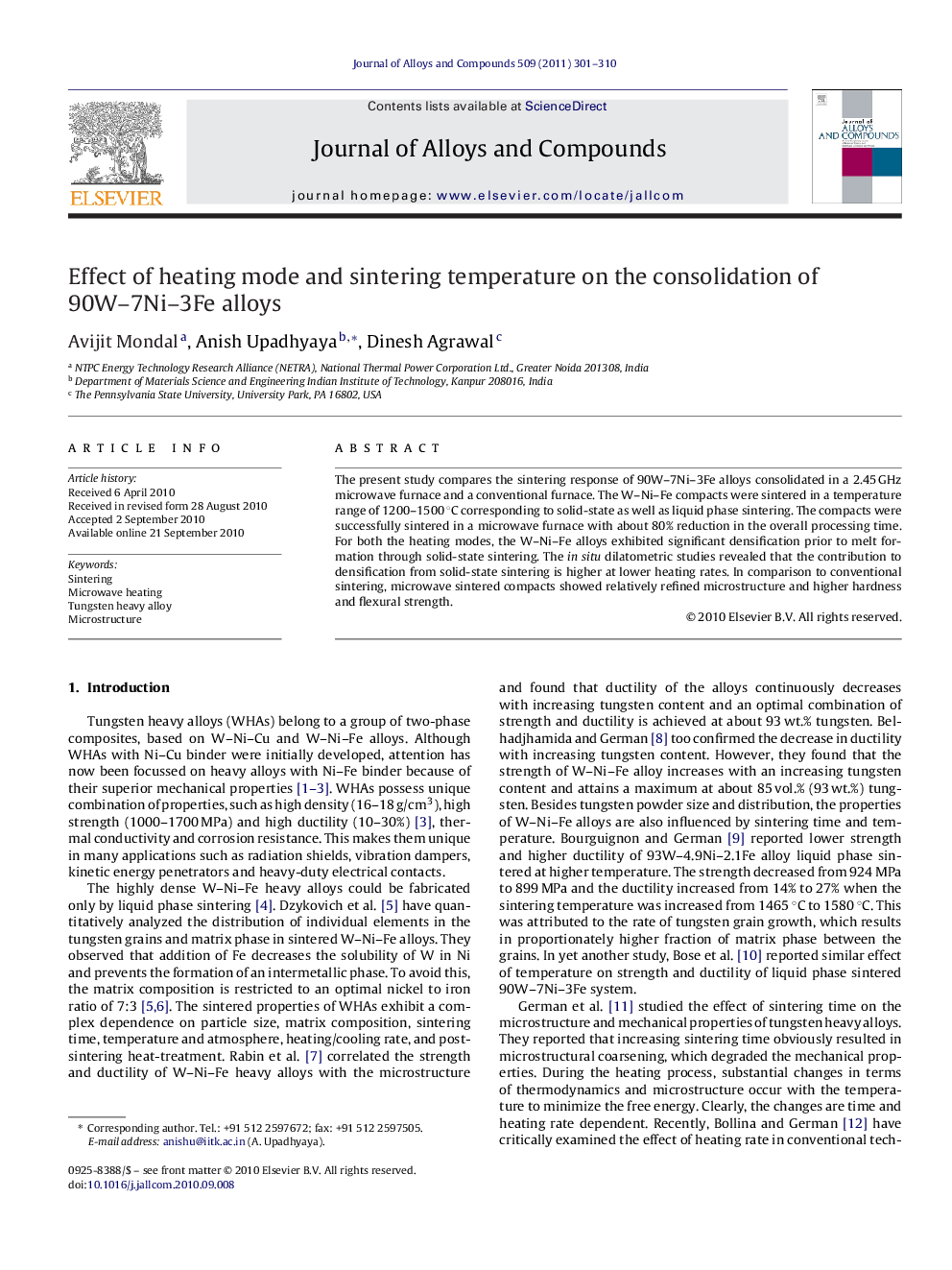| Article ID | Journal | Published Year | Pages | File Type |
|---|---|---|---|---|
| 1619164 | Journal of Alloys and Compounds | 2011 | 10 Pages |
The present study compares the sintering response of 90W–7Ni–3Fe alloys consolidated in a 2.45 GHz microwave furnace and a conventional furnace. The W–Ni–Fe compacts were sintered in a temperature range of 1200–1500 °C corresponding to solid-state as well as liquid phase sintering. The compacts were successfully sintered in a microwave furnace with about 80% reduction in the overall processing time. For both the heating modes, the W–Ni–Fe alloys exhibited significant densification prior to melt formation through solid-state sintering. The in situ dilatometric studies revealed that the contribution to densification from solid-state sintering is higher at lower heating rates. In comparison to conventional sintering, microwave sintered compacts showed relatively refined microstructure and higher hardness and flexural strength.
Research highlights▶ The present study compares the sintering response of 90W–7Ni–3Fe alloys consolidated in a 2.45 GHz microwave furnace and a radiatively heated (conventional) furnace. ▶ The compacts were successfully sintered in a microwave furnace with about 80% reduction in the overall processing time. ▶ Microwave sintering results in well-developed liquid phase sintered microstructure at about 50 °C lower temperature as compared to conventional sintering. ▶ Microwave sintered compacts had about 23% lower tungsten grain size and 22% improvement in the bulk hardness (352 VHN). As compared to 90W–7Ni–3Fe alloys sintered at 1450 °C in a conventional furnace, microwave sintering led to significant (∼130%) improvement in the transverse rupture strength from 782 MPa to 1800 MPa.
